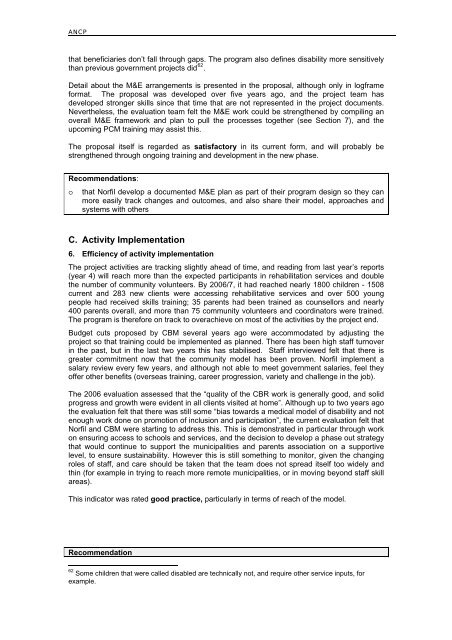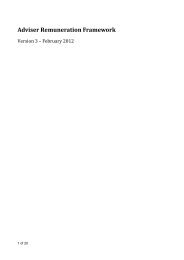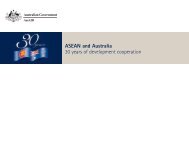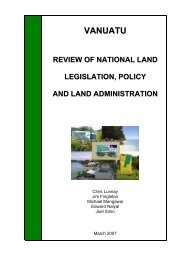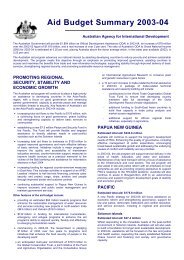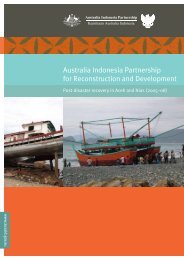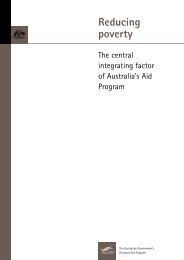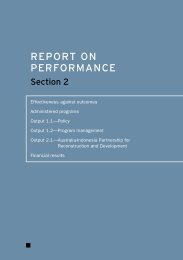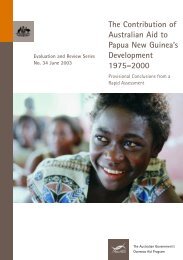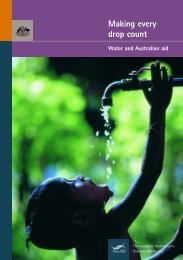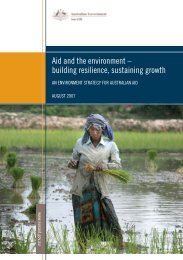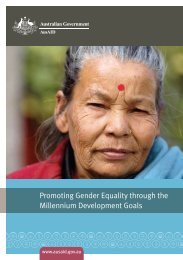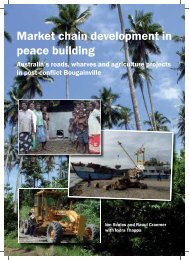ANCP Philippines Cluster Evaluation Report - AusAID
ANCP Philippines Cluster Evaluation Report - AusAID
ANCP Philippines Cluster Evaluation Report - AusAID
Create successful ePaper yourself
Turn your PDF publications into a flip-book with our unique Google optimized e-Paper software.
<strong>ANCP</strong>that beneficiaries don’t fall through gaps. The program also defines disability more sensitivelythan previous government projects did 62 .Detail about the M&E arrangements is presented in the proposal, although only in logframeformat. The proposal was developed over five years ago, and the project team hasdeveloped stronger skills since that time that are not represented in the project documents.Nevertheless, the evaluation team felt the M&E work could be strengthened by compiling anoverall M&E framework and plan to pull the processes together (see Section 7), and theupcoming PCM training may assist this.The proposal itself is regarded as satisfactory in its current form, and will probably bestrengthened through ongoing training and development in the new phase.Recommendations:othat Norfil develop a documented M&E plan as part of their program design so they canmore easily track changes and outcomes, and also share their model, approaches andsystems with othersC. Activity Implementation6. Efficiency of activity implementationThe project activities are tracking slightly ahead of time, and reading from last year’s reports(year 4) will reach more than the expected participants in rehabilitation services and doublethe number of community volunteers. By 2006/7, it had reached nearly 1800 children - 1508current and 283 new clients were accessing rehabilitative services and over 500 youngpeople had received skills training; 35 parents had been trained as counsellors and nearly400 parents overall, and more than 75 community volunteers and coordinators were trained.The program is therefore on track to overachieve on most of the activities by the project end.Budget cuts proposed by CBM several years ago were accommodated by adjusting theproject so that training could be implemented as planned. There has been high staff turnoverin the past, but in the last two years this has stabilised. Staff interviewed felt that there isgreater commitment now that the community model has been proven. Norfil implement asalary review every few years, and although not able to meet government salaries, feel theyoffer other benefits (overseas training, career progression, variety and challenge in the job).The 2006 evaluation assessed that the “quality of the CBR work is generally good, and solidprogress and growth were evident in all clients visited at home”. Although up to two years agothe evaluation felt that there was still some “bias towards a medical model of disability and notenough work done on promotion of inclusion and participation”, the current evaluation felt thatNorfil and CBM were starting to address this. This is demonstrated in particular through workon ensuring access to schools and services, and the decision to develop a phase out strategythat would continue to support the municipalities and parents association on a supportivelevel, to ensure sustainability. However this is still something to monitor, given the changingroles of staff, and care should be taken that the team does not spread itself too widely andthin (for example in trying to reach more remote municipalities, or in moving beyond staff skillareas).This indicator was rated good practice, particularly in terms of reach of the model.Recommendation62 Some children that were called disabled are technically not, and require other service inputs, forexample.<strong>ANCP</strong> <strong>Philippines</strong> <strong>Cluster</strong> <strong>Evaluation</strong> <strong>Report</strong> (ver. 2.0)XX


